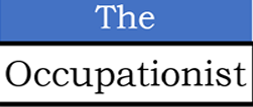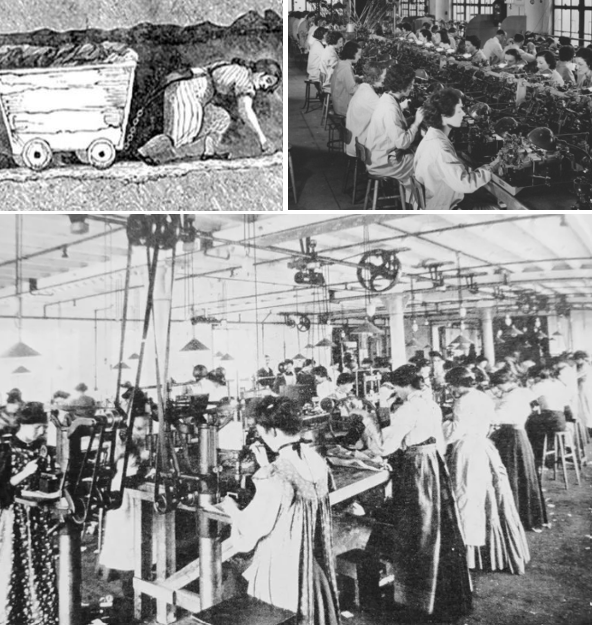All women work, including the full-time homemakers. How does the work (job) impact women and their health?
Women have been working since time immemorial, mostly at home doing all the household work. In the olden days it was common to have 5 or more children on an average. Looking after the needs of these children as well as the husband was like running a small office of 6 people today. All jobs were done single-handedly and were time-bound, as the husband had to leave for work in time and the kids to school. She was and is a supply chain expert as she continues to make available all supplies for smooth running of the house. All this causes stress.
Women leaving a job due to health reasons in the 21st century is unacceptable.
Women’s work has not always been accurately recorded in history. This is due to much of women’s work being irregular, home-based or in family-run businesses. Census done in the early years of 19th century often show a blank space under the ‘occupation’ column against women’s names. There is some evidence that from 1850 onwards women were engaged in wide variety of work that paid them wages in the UK.
The stress increased when women were forced to enter the workforce to provide secondary income for the family needs. The household work (cooking, cleaning, child care, having an animal like cow, growing vegetable in the backyard etc.) that was unpaid also had to be completed. This added even more stress.
The working conditions in general were horrific and the women worked in factories, mines, textile mills, farms or as domestic service for the rich and were paid less than men. Few women worked from home in occupations such as laundry, finishing garments and shoes for factories or preparation of snacks to sell in the market.
A woman was and is a supply chain expert as she continues to make available all supplies for smooth running of the house.
There were factories coming up as a part of Industrial Revolution which was the time (1760 AD to 1840 AD) when the shift to new manufacturing processes occurred in the Great Britain which soon spread to France and the United States of America.
During Industrial Revolution, more working hands were required and women were employed as their wages were one-third to one-half of a man’s average salary. Soon the children, as young as 6 years old, joined in as their wages were even lower.
Women would work during the Industrial Revolution for 11 hours with a 45-minute break and if they broke rule they would be strapped. They worked in dangerous environments with dust covering from head to toe. There were no masks or any safety equipment. Food offered was poor and often covered with dust and hence inedible.
Tough working conditions continued till 1930s. In fact, during an exceptionally cold July of 1888, one of the most famous strikes by women workers occurred at the Byrant and May match factory in the East End of London when 200 workers left work in protest because the factory owners sacked three workers who had talked to Annie Besant, a social reformer, about their working conditions.
Yes, she is the same Annie Besant who was involved with politics in India and helped launch the Home Rule League to campaign for democracy in India in 1914. This led her to become the President of Indian National Congress in 1917.
An article was published by Besant in her halfpenny weekly paper ‘The Link’ on 23rd June 1888 titled ‘White Slavery in London’. The article was about working conditions at the Byrant and May factory highlighting poor pay, 14-hour work days, excessive fines and health problems arising from working with white phosphorus.
Women would work during the Industrial Revolution for 11 hours with a 45-minute break and if they broke rule they would be strapped.
It is ironic that around the same time, Jamsetji Tata of the Tata Group in India opened one of its very first enterprises, the Empress Mills at Nagpur, on 1st January 1877. The Empress Mills established two creches for babies of the women who were employed there. Girls who worked half-time in the mill could attend classes in reading, writing and needlework. A primary school was also established. For older children, two factory schools were established. By 1921, maternity benefit allowance was available to women who were employed for 11 months or more to be given two months paid maternity benefit.
The Empress Mills went on to established 7 night-schools where languages, music and dance were taught. Four gyms were set up for exercise and good health and sports made an integral part of life at the Empress Mills. Employees had free medical facilities. A Health Week was organized each year to highlight various diseases and how workers could keep themselves and families safe.
Empress Mills established Provident Fund (PF) in 1901, decades before it was legally mandated. An accident compensation scheme was established in 1895 and a Pension Fund in 1887. Last but not the least, to further help the workers, a cooperative credit society was also set up around the same time.
While opening an extension of Empress Mills in 1895, Jamsetji Tata said, ‘We do not claim to be more unselfish, more generous or more philanthropic than other people. But, we think, we started on sound and straightforward business principles, considering the interests of our shareholders our own, and the health and welfare of our employees the sure foundation of our prosperity’.
In the first half of 20th century (1930 onwards), many Acts and Laws were passed by various governments, including India, where issues like minimum wages, working conditions, compensation etc. were addressed.
In 1877, Jamsetji Tata established schools, creches, gyms etc. in Empress Mills. Medical facilities were free and health week was observed every year.
After the famous strike by women workers at Byrant and May match factory in London, the workers took their campaign to the parliament and with the support of London Trades Council, all their demands were met, eventually leading to formation of a Union of Women Match Workers.
Women continued their pursuit to work, and most of them in unorganized sectors in developing countries, still are with wages far below men, despite having laws.
Health issues in women are more than in men due to multiple reasons – not taking care of themselves being the foremost. The sacrifice for family is paramount in most cultures across the world.
If they do not take care of themselves, soon they will equal men in diseases that earlier weren’t theirs.
Women, on this International Women’s Day (2023), take a pledge to have a work-life balance. Only if you take care of yourself can you take care of the family and job. Work-life balance is for women too. The men should share home responsibilities as well to allow time for women to have work-life balance. Where possible, the 60:40 ‘work from home’ rule is a nice way that employers can indirectly encourage work-life balance amongst their workers.
Imbalance in work-life balance causes stress which in turn causes a lot of illnesses. Women who were not prone to some diseases earlier are prone to those as they enter the workforce, both organized and unorganized. If they do not take care of themselves, soon they will equal men in diseases that earlier weren’t theirs.
In India, according to one estimate, it is said that 86% of working women have seen their colleagues, relatives or friends drop out of the workforce, of which 59% due to health issues as the main reason. Women leaving a job due to health reasons in the 21st century is unacceptable. The sooner we investigate and find solutions the better. In case of access to Occupational Health physician, inputs can be sought to mitigate specifically any health effects due to work in women and any other concern so that drop out of the workforce be reduced.
However, no one can make the workplace conducive to their health and contribute to change the work scenario except the women themselves!
To know more, contact
______________________________________________________________________________________
Dr Ajay Sati is an Occupational Health physician who prefers to describe himself as an Occupationist, to denote, ‘an expert in diseases and other concerns of occupations’. Dr Sati has managed health and wellness programs in industries he worked, like the atomic energy, and energy (oil & gas) in India and overseas. An experienced virtual consultation expert he was involved in many greenfield and brownfield projects providing inputs from health point of view.



